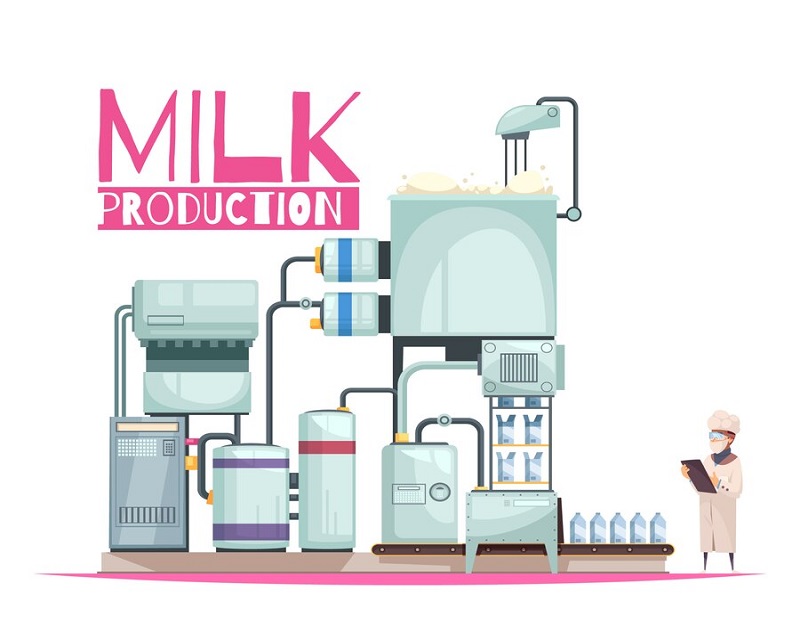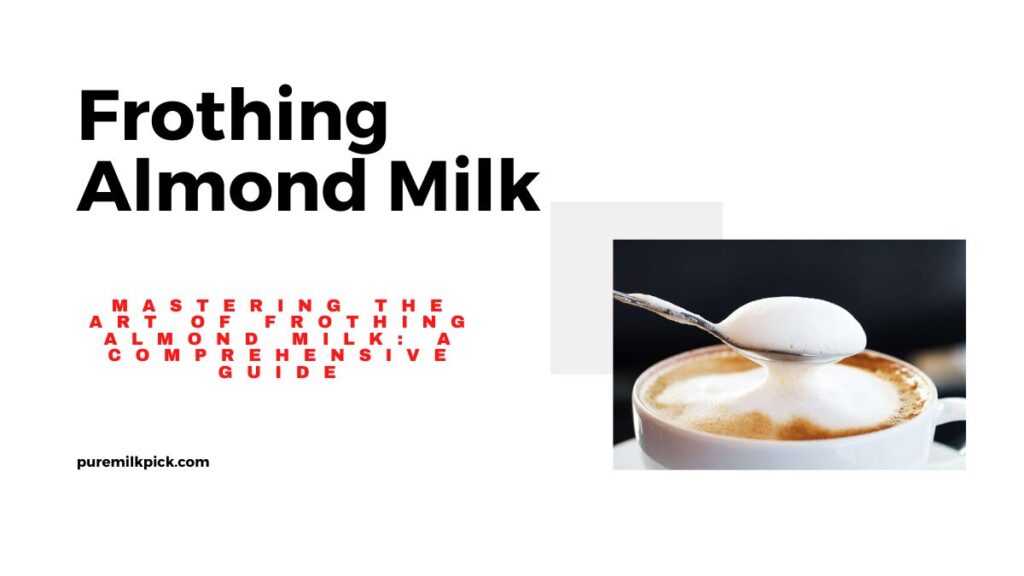In recent years, almond milk has surged in popularity as a dairy alternative, touted for its health benefits and environmental friendliness. However, amidst its rising fame, concerns have arisen regarding its environmental impact. Critics argue that almond milk production takes a heavy toll on the environment, raising questions about its sustainability. In this article, we delve into the complex relationship between almond milk and the environment, separating fact from fiction.
Understanding Almond Milk Production
Before delving into its environmental impact, it’s crucial to understand how almond milk is produced. Almond milk originates from almonds, which are harvested from almond trees primarily grown in California. The process involves soaking almonds in water, blending them, and then straining out the liquid to produce the milk.
Water Usage Concerns
One of the primary criticisms leveled against almond milk production is its purportedly high water usage. Almond trees require significant amounts of water to thrive, leading to concerns about water scarcity, particularly in drought-prone regions like California. Critics argue that the intensive irrigation needed for almond cultivation exacerbates water stress and depletes aquifers.
Read More: The Almond Milk Solution: A Guide to Soothing Acid Reflux
Almond Demand Water
While it’s true that almond cultivation demands water, recent studies have offered a more nuanced perspective. According to research published in the Journal of Environmental Management, almond milk production accounts for approximately 4% of California’s agricultural water usage. While not insignificant, this figure challenges the notion that almond milk production is the primary driver of water scarcity.
Moreover, almond growers have made strides in improving water efficiency through technologies like drip irrigation and precision agriculture. These advancements enable growers to maximize water usage while minimizing waste, mitigating the environmental impact of almond cultivation.
Land Use and Biodiversity
Almond Milk Production
Another concern surrounding almond milk production is its impact on land use and biodiversity. Critics argue that the expansion of almond orchards displaces native vegetation, reduces habitat for wildlife, and contributes to monoculture, where large swaths of land are dedicated to a single crop.
While it’s true that almond cultivation requires land, it’s essential to consider the broader context. Many almond orchards in California are situated in areas that were previously used for agriculture, such as pastureland or other crops. Additionally, almond trees provide habitat for pollinators like bees, contributing to biodiversity.

Almond Growth
Furthermore, almond growers have implemented practices to enhance biodiversity and soil health, such as planting cover crops, maintaining hedgerows, and adopting integrated pest management techniques. These efforts help support a more ecologically diverse landscape while minimizing the environmental footprint of almond production.
Pesticide Use and Environmental Degradation
Widespread Application
Almond cultivation relies heavily on the use of pesticides to control pests and diseases. These chemicals are applied throughout the growing season to protect the crop from damage and ensure high yields. However, the widespread application of pesticides can have negative impacts on the environment, including soil contamination, water pollution, and harm to non-target organisms.
Impact on Pollinators
One of the most significant concerns surrounding pesticide use in almond cultivation is its impact on pollinators, particularly bees. Almond trees depend on insect pollination for fruit sets, making bees essential for the success of almond orchards. However, pesticide exposure can weaken bee colonies, leading to population decline and reduced pollination services.
Organic Alternatives
To mitigate the environmental risks associated with pesticide use, some almond producers are turning to organic farming practices. Organic almond production prohibits synthetic pesticides and fertilizers, relying instead on natural methods of pest control and soil management. While organic almonds may come with a higher price tag, they offer consumers a more environmentally friendly choice.
Carbon Emissions and Climate Change
Transportation and Processing
In addition to water and land usage, almond milk production also contributes to carbon emissions through transportation and processing. Almonds are often grown in California and then transported to processing facilities for milk production, which can involve long-distance travel by truck or rail. The processing of almonds into milk also requires energy, further adding to its carbon footprint.

Comparison with Dairy Milk
While almond milk may have a lower carbon footprint than dairy milk in terms of methane emissions from livestock, its overall environmental impact is still significant. Studies have shown that almond milk production generates more greenhouse gas emissions per liter than dairy milk, primarily due to the energy-intensive nature of almond cultivation and processing.
Lifecycle Analysis
Lifecycle assessments (LCAs) provide valuable insights into the environmental impacts of different food products, including almond milk. These assessments consider factors such as resource use, emissions, and waste generation throughout the entire lifecycle of a product, from production to consumption to disposal. By conducting LCAs, researchers can identify opportunities for reducing environmental impacts and improving sustainability.
Sustainable Alternatives and Solutions
Diversification of Plant-Based Milk
While almond milk remains a popular choice among consumers, there are many other plant-based milk alternatives available that may have lower environmental footprints. Oat milk, soy milk, and hemp milk are just a few examples of alternatives that offer similar nutritional profiles to almond milk while requiring fewer resources for production.
Supporting Sustainable Brands
When purchasing almond milk or other plant-based products, consumers can make a difference by supporting brands prioritizing sustainability and ethical sourcing practices. Look for certifications such as USDA Organic, Fair Trade, or Rainforest Alliance, which indicate that a product has been produced in an environmentally and socially responsible manner.
Reducing Food Waste
Another way to lessen the environmental impact of almond milk consumption is by reducing food waste. By using almond milk efficiently and minimizing spoilage, consumers can help conserve resources and reduce greenhouse gas emissions associated with food production and disposal.
Conclusion: Rethinking Almond Milk’s Environmental Impact
In conclusion, the debate surrounding almond milk’s environmental impact is nuanced, with conflicting narratives and perspectives. While almond cultivation does pose challenges, it’s essential to consider the broader context, including advancements in sustainable practices and ongoing efforts to mitigate environmental risks.
Rather than demonizing almond milk, we should focus on fostering innovation and collaboration across the almond industry to address environmental concerns effectively. By supporting responsible almond cultivation practices and embracing sustainable agriculture, we can ensure that almond milk continues to be a viable and environmentally sound dairy alternative.
Ultimately, the question of whether almond milk is “bad” for the environment lacks a simple answer. Instead, it’s crucial to weigh the environmental pros and cons of almond milk production while recognizing the strides made toward sustainability. With informed decision-making and a commitment to environmental stewardship, almond milk can be part of a more sustainable food system.
Frequently Asked Questions about Almond Milk and the Environment
Almond milk production does require water, but the perception of its water intensity may be overstated. While almond trees indeed need water to thrive, recent research suggests that almond milk production accounts for approximately 4% of California’s agricultural water usage. Moreover, advancements in irrigation techniques, such as drip irrigation and precision agriculture, have helped improve water efficiency in almond cultivation, mitigating some of its environmental impacts.
Concerns about deforestation and habitat loss often arise in discussions about almond milk production. While almond orchards do require land, many are established in areas previously used for agriculture. Additionally, almond trees provide habitat for pollinators like bees, supporting biodiversity. To address concerns about habitat loss and monoculture, almond growers have implemented practices such as planting cover crops and maintaining hedgerows to enhance biodiversity and soil health.
Comparing the carbon footprint of almond milk to dairy milk reveals some interesting insights. While almond cultivation does generate emissions, studies suggest that almond milk production produces fewer greenhouse gas emissions per liter compared to dairy milk. Research published in the Journal of Industrial Ecology highlights this finding, indicating that almond milk’s carbon footprint is comparable to or lower than that of dairy milk. Additionally, as almond growers adopt sustainable practices and invest in renewable energy, the carbon intensity of almond production is likely to decrease further.



